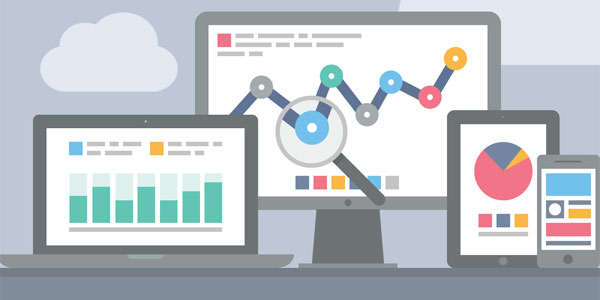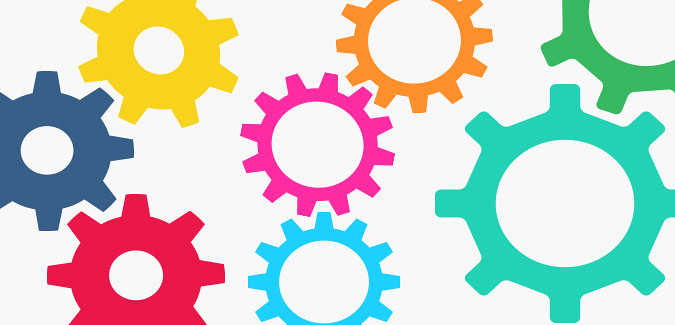Guide to the Best Accounting Software for SaaS Businesses
 Without the proper systems and tech stack in place, accounting for your SaaS business can be a nightmare. It can be exceptionally administrative and manual which might not only result in a major waste of time for the founders and their team members at the company, but will also result in not getting timely financial data to base strategic decisions on.
Without the proper systems and tech stack in place, accounting for your SaaS business can be a nightmare. It can be exceptionally administrative and manual which might not only result in a major waste of time for the founders and their team members at the company, but will also result in not getting timely financial data to base strategic decisions on.
Only a few days ago, an article was posted on Techvibes saying that most businesses are still using spreadsheets as their primary source of analytics and reporting. From my first hand experience dealing with most small businesses, this is all too true and it’s not uncommon for us to encounter funded tech-startups and SaaS companies managing a year’s worth of financial data in a sloppy spreadsheet.
The solution?
Implementation of the proper systems, processes and technology stack as early as possible. With the right accounting software for SaaS businesses, you can achieve a seamless flow of data between all financial processes in your business which would ultimately enter your cloud accounting system, ideally automatically.
Why are good accounting systems and processes important for SaaS businesses?
The difficulty with SaaS businesses is that they are typically high transaction volume businesses, especially on the revenue side of things. It’s not uncommon to have thousands of transactions per month happening due to the recurring revenue model.
When you have old, archaic accounting software (or even worse, spreadsheets), managing this high transaction load, it means that it’s very manual to reconcile and categorize your financial data on an on-going basis. You would need to enter every single one of these transactions 1 by 1 into your accounting system or spreadsheet in order to handle the accounting properly. Some SaaS businesses that we encounter even have 1 full time employee at the company just to handle data entry.
Using this approach usually ends up with the company wasting time, wasting resources and not getting the data they need when they need it.
With the right accounting software for SaaS businesses, much of this manual data entry and categorization process can be greatly alleviated.
The best accounting software for SaaS business
The key to easy accounting for your SaaS business is to select the right accounting software to begin with. There is no other option here, you need to go cloud in order to leverage automation to its fullest. I have written about which system to choose right here on Techvibes as well as with an updated post here, but for the purpose of SaaS companies, we tend to have a preference for Xero, with Quickbooks Online coming in second.
Our reasons for our preference for Xero is outlined in the linked article above, but mostly still hold true; the app marketplace and the third party integrations are still superior on Xero’s end, which is important because this is how things are streamlined and automated when constructing an accounting workflow that is as efficient as possible.
One reason to consider Quickbooks Online vs Xero, is that Xero states that businesses that have more than 1000 transactions per month flowing through their accounts will see a decrease in performance when it comes to their app. Quickbooks Online on the other hand, from my conversations with Intuit, seem to not be limited to this same constraint and that the limit may actually be higher than 1000 transactions per month.
On a more basic level, any cloud accounting software for your SaaS business will be leap years ahead of a spreadsheet or desktop accounting system since they all pretty much have automatic bank feeds as a feature, where bank, credit card and Paypal accounts can be connected to the app to pull in transactions automatically. Since SaaS businesses are higher transaction volume in nature, this feature alone is absolutely critical to get any sort of control over the accounting in order to reduce manual, tedious tasks of data entry.
At the end of the day, the possibility to automate your accounting stems from having a cloud accounting system in place that can integrate with various third party apps.
The best invoicing and billing apps for your SaaS business
To manage the revenue side of things, there are a few apps that are quite popular for companies that engage in recurring & subscription billing. Depending on what is selected, there are different ways on how these transactions can be categorized and recorded in your accounting system which we won’t go into detail here.
Stripe is a payment processor that allows businesses to process credit card payments. Since it has a developer friendly API, it will allow you to connect to your website so that recurring billing can be setup as soon as a customer fills out the required information in your form.
We also have customers that have integrated Stripe directly into Xero via a custom integration and have created a dummy bank account, so that as a Stripe payment is processed, it will push to the Stripe dummy account in Xero as a transaction with the Stripe transaction fees being separated. This works well because Stripe deposits money into your bank 7 days later as a lump sum net deposit (ie. original transaction amount less the Stripe fees deducted). By using a dummy Stripe account in Xero, bank rules can be setup in Xero so that all Stripe fees are automatically coded to a “Stripe fees” account and so that individual Stripe transactions can be identified and categorized appropriately, which is easier than trying to determine what’s in the net deposit.
Chargify is an app which helps manage subscription & recurring billing. Chargify is not there to replace something like Stripe, but to add an additional layer on top of it. Chargify would be connected to your website and then dictate to your payment processor of choice (you can choose between a variety of payment processors and compare rates), which customer needs to be billed and when.
Some benefits of Chargify include being able to send out sales invoices to customers automatically (which is important for compliance & audit purposes), payment receipts, having good integrations with Xero, among many others.
The integration with Xero is especially interesting as you can opt to have every single sales transaction push through to Xero as a paid sales invoice. There are pros and cons to this approach, but one major pro is that we can be much more accurate when it comes to recording and reporting sales taxes in Canada, which is a major pain for most SaaS companies.
One important consideration to keep in mind is that in Canada we have to track sales tax per provincial jurisdiction that we’re selling to and then remit this to the correct tax authority. Since SaaS companies are usually global and have high transaction volume, it has typically been hard to separate the correct sales tax that needs to be remitted. The Chargify integration can help and push the right sales tax numbers to Xero automatically.
The best receipt & expense management apps for your SaaS business
SaaS businesses usually have a lot of SaaS expenses as well. Instead of collecting your expense invoices & receipts and forwarding them to your accountant, a better way to streamline & automate getting your expenses into your accounting system is to use a combination of Hubdoc + Receipt Bank + Xero.

Use Hubdoc (info on Hubdoc can be found here) to automatically fetch & organize your online invoices and SaaS expenses without you having to lift a finger. Once fetched, have Hubdoc auto-forward these receipts/invoices over to Receipt Bank, where Receipt Bank can use OCR technology to automatically parse the data from the receipt (more info on apps to replace your shoebox of receipts can be found here). Once the data has been extracted, have these expense items pushed directly into your cloud accounting system of choice (Xero or Quickbooks Online).
There is some redundancy between Hubdoc and Receipt Bank (and some choose just to use either one or the other), but we tend to use the best features of both apps and combine them together rather than just sticking to one of them.
This combination of apps is a great way to organize your expenses and to get them easily entered into your accounting system with zero manual data entry required.
The best analytics apps for your SaaS businesses
Do you spend any time at all calculating your MRR, customer lifetime value & churn? If you do, then you’re doing it all wrong!
Apps like Chart Mogul can connect to Stripe, Chargify and a variety of other billing and payment platforms to automatically calculate the SaaS metrics that matter most to you.
In addition to your SaaS product, if you have on-premise software where you charge an annual licensing fee, these annual fees would need to be manually broken down to provide you with the metrics you require unfortunately.
Systems and processes are key
If you’re going to eliminate the administrative nightmare of your accounting and start getting timely, accurate data, it all revolves in having the right accounting software for SaaS businesses in place, though choosing the right apps is just 50% of the equation to achieving stress-free accounting. The proper system architecture needs to be assembled, processes need to be defined so that everyone knows how data will flow between all apps and the right team has to be in place to maintain the integrity of the data on an on-going basis.
Hopefully this guide will serve as a starting point for those at SaaS businesses that are currently pulling their hair out due to their accounting.
This guest article was written by Ryan Lazanis of Xen Accounting.











